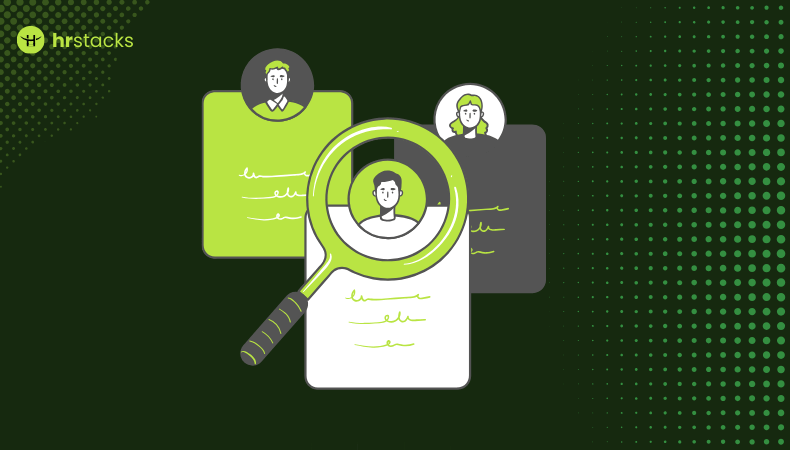Technology is now deeply woven into every stage of an employee’s journey within an organization. From the moment a candidate applies to a company, through their onboarding, ongoing development, and eventual departure, digital tools and data-driven platforms are reshaping how these processes unfold.
This shift is not just about automating routine tasks; it’s about creating more personalized, efficient, and engaging experiences for both employees and HR teams.
By leveraging innovations like AI, cloud systems, and predictive analytics, organizations can make smarter hiring decisions, tailor training to individual needs, and proactively support employee well-being and retention.
Imagine AI-powered systems that screen resumes in seconds, chatbots that guide new hires through paperwork, adaptive learning platforms that tailor growth paths, and analytics that flag flight risks before they materialize.
Combined, these tools form a seamless, intelligent ecosystem that connects recruitment, onboarding, development, engagement, retention, and offboarding into a cohesive experience.
This article will help you understand how each stage benefits from technology, highlights emerging trends poised to shape the future, and provides practical steps for establishing a tech-enabled lifecycle that enables HR to focus on what truly matters: people.
Let’s dive into how technology can transform your employee lifecycle into a strategic advantage.
Understanding The Employee Lifecycle
The employee lifecycle refers to the series of stages an individual experiences within an organization, typically including recruitment, onboarding, development, retention, and offboarding.
Each phase shapes the employee’s experience and has a direct impact on organizational productivity and culture.
Recent global challenges, including the COVID-19 pandemic, have accelerated the adoption of digital technologies in managing this lifecycle, prompting organizations to rethink traditional HR models and embrace innovations such as AI, cloud computing, and predictive analytics.
Here is the list of stages the tech-enabled employee cycle goes through:
- Tech-Enabled Recruitment: Precision and Efficiency
- Onboarding: Personalized And Engaging Experiences
- Employee Development And Performance Management: Data-Driven Growth
- Enhancing Employee Experience Through Advanced Technologies
- Retention: Predictive Analytics And Proactive Engagement
- Offboarding: Seamless Transitions And Knowledge Preservation
Traditional vs Tech-Enabled Lifecycle (Comparison Table)
Before we explore each stage in depth, let’s quickly compare how traditional HR approaches differ from today’s tech-enabled strategies across the employee lifecycle.
| Phase | Traditional Approach | Tech-Enabled Approach |
|---|---|---|
| Recruitment | Manual resume screening | AI-powered ATS, skill matching |
| Onboarding | Paper-based orientation | Personalized digital onboarding |
| Development | Annual reviews | Real-time feedback, adaptive learning |
| Retention | Reactive measures | Predictive analytics, wellness nudges |
| Offboarding | Manual exit process | Automated knowledge capture, digital offboarding |
Tech-Enabled Recruitment: Precision and Efficiency
Recruitment is the gateway to the employee lifecycle and arguably one of the most critical phases. Technology has transformed recruitment from a manual, time-consuming process into a streamlined, data-driven function.
Applicant Tracking Systems (ATS) and AI-powered tools now automate resume screening, skill assessments, and even preliminary interviews, significantly reducing time-to-hire and improving candidate fit.
AI algorithms analyze vast datasets to identify candidates whose skills and experiences align closely with job requirements, while also mitigating unconscious bias through standardized evaluation criteria.
Furthermore, digital platforms enable virtual recruitment events and remote interviews, expanding the talent pool globally. This tech-driven recruitment approach not only enhances efficiency but also improves the quality of hires, which is vital for long-term organizational success.
Why it matters:
- Faster hiring cycles: fills roles swiftly
- Higher-quality hires: better candidate fit
- Reduced bias: more diverse teams
- Recruiter focuses on strategy: less admin
- Cost-effective: lower hiring expenses
Advantages of Tech-Enabled Employee Lifecycle

Onboarding: Personalized And Engaging Experiences
Once a candidate is hired, the onboarding process is crucial for integrating them into the company culture and equipping them with the necessary knowledge.
Tech-enabled onboarding platforms provide personalized learning paths, digital document management, and interactive training modules accessible anytime and anywhere.
Learning Management Systems (LMS) powered by AI can adapt training content based on the employee’s role, prior knowledge, and learning pace, ensuring effective knowledge transfer.
Virtual onboarding sessions and collaboration tools foster early engagement, especially in remote or hybrid work scenarios.
These technologies reduce administrative burdens on HR teams while enhancing the new hire’s experience, which correlates strongly with retention rates and early productivity.
Why it matters:
- Faster ramp-up: employees contribute sooner
- Stronger engagement: boosts emotional connection
- Higher retention: reduces early attrition
- Consistent experience: equitable onboarding everywhere
- Scalable efficiency: less manual HR workload
Employee Development And Performance Management: Data-Driven Growth
Employee development is vital for maintaining a motivated and skilled workforce. Modern HR platforms integrate continuous performance management with real-time feedback, goal tracking, and skill gap analysis.
Predictive analytics identify potential high performers and those at risk of disengagement, enabling targeted interventions.
Cloud-based Human Resource Information Systems (HRIS) consolidate employee data across departments, providing managers with comprehensive insights into individual and team performance.
AI-powered coaching tools offer personalized recommendations for skill development, career progression, and learning opportunities. This data-driven approach fosters a culture of continuous improvement and agility, essential in dynamic market environments.
Why it matters:
- Objective evaluations: reduce bias in reviews
- Tailored development: enhances skill growth
- Timely intervention: fixes issues early
- Improved engagement: data builds trust
- Strategic planning: supports future leadership
Enhancing Employee Experience Through Advanced Technologies
Beyond functional HR processes, technology is now central to creating a personalized and engaging employee experience. Emerging technologies such as ambient intelligence, blockchain for secure data management, and AI-driven analytics enable hyper-personalization of workplace interactions.
These innovations support the HR 5.0 paradigm, which emphasizes the fusion of human empathy with technological intelligence to build sustainable and inclusive workplaces.
For example, AI chatbots provide instant responses to employee queries, while wellness apps monitor mental health and work-life balance, facilitating proactive support. Moreover, digital platforms enable transparent communication and recognition programs, which are critical for fostering trust and motivation.
Why it matters:
- Empowered employees: they find answers themselves
- Improved satisfaction: fewer errors, more trust
- Personalized experiences: recognition feels genuine
- Better engagement: data-driven insights guide action
- Stronger well-being: support is proactive and visible
Retention: Predictive Analytics And Proactive Engagement
Employee retention remains a top priority for organizations due to the high costs associated with turnover.
Technology empowers HR teams to adopt a proactive retention strategy by leveraging predictive analytics that identify patterns indicative of potential attrition.
Factors such as declining engagement scores, reduced productivity, or changes in workplace behavior can trigger timely interventions.
Digital feedback tools and pulse surveys collect real-time employee sentiment, enabling management to address concerns promptly.
Personalized career development plans, flexible work arrangements supported by digital tools, and recognition programs contribute to higher satisfaction and loyalty.
These tech-enabled retention strategies align with research showing that job satisfaction and work flexibility significantly enhance employee performance.
Why it matters:
- Prevents turnover: saves recruitment costs
- Protects top talent: retains high performers
- Boosts engagement: reacts before issues
- Drives ROI: reduces hidden separation costs
- Supports culture: strengthens organizational stability
Offboarding: Seamless Transitions And Knowledge Preservation
The employee lifecycle concludes with offboarding, a phase often overlooked but critical for organizational knowledge retention and employer branding. Technology facilitates automated exit interviews, digital clearance processes, and knowledge transfer platforms that capture essential insights from departing employees.
Alumni networks maintained through digital platforms can transform former employees into brand ambassadors or future collaborators. Additionally, secure data management ensures compliance with legal and regulatory requirements during offboarding.
A smooth, tech-enabled offboarding process preserves goodwill and safeguards institutional knowledge for ongoing organizational benefit.
Why it matters:
- Mitigates security risks: prevents unauthorized access
- Retains critical knowledge: avoids operational disruption
- Boosts compliance: meets legal standards
- Saves HR time: reduces manual work
- Enhances employer brand: leaves a positive impression
Challenges And Considerations In Tech-Enabled Employee Lifecycle
Adopting technology across the employee journey brings efficiency, but also significant challenges. Common hurdles include integrating new tools with legacy systems, ensuring data security and privacy, managing organizational change, bridging skill gaps, and embedding ethical AI governance.
Each hurdle can limit adoption, erode trust, and diminish ROI if not addressed head-on.
- Legacy system integration: When older systems can’t communicate efficiently with new tools, it blocks smooth data flow and hampers user experience.
- Data privacy & security: HR platforms collect sensitive personal data; breaches or non-compliance can lead to legal penalties and reputational harm.
- Resistance to change: Without clear communication and support, employees may resist new systems, stalling adoption and diminishing impact.
- Skill gaps: HR teams often need upskilling to utilize advanced tech effectively—training is essential.
- Cost & ROI measurement: Tech investments require clear budgeting and tracking to demonstrate value.
- Ethical AI oversight: Biased algorithms and opaque models demand governance frameworks to ensure fairness.
Future Trends: AI, Metaverse, and Beyond
The HR landscape is evolving rapidly, and technologies once considered experimental are now reshaping how organizations attract, develop, and retain talent. Let’s explore some of the most impactful trends on the horizon:
- Agentic AI & Generative Assistants: Next-gen AI agents aren’t just reactive; they act on behalf of users, autonomously scheduling interviews, prompting coaching reminders, managing wellness nudges, and even generating training content. Leaders like Liz Centoni (Cisco) predict these “agentic” tools will revolutionize workplace workflows.
- Metaverse for Immersive HR Experiences: More firms, including Coty and Accenture, are testing VR/AR-enabled onboarding, training simulations, and virtual collaboration hubs. These immersive environments foster engagement, replicate real-world contexts safely, and bridge geographic divides.
- Multimodal & Emotional AI: AI is advancing to understand voice, text, facial cues, and emotional state. This multimodal intelligence can detect burnout, prompt wellbeing check-ins, and power chatbots that “feel” empathetic.
- Blockchain & Decentralized Identity: With blockchain, employees can own verified digital credentials, custodians of their skills, history, and identity. This decentralization boosts trust in hiring, credentialing, and internal mobility.
- Digital Twins & Dynamic Talent Modeling: Some organizations are creating digital replicas of their workforce, simulating various strategies (like four-day workweeks or training investments) to see impacts before rollout.
- Hyper-Personalization at Scale: AI-powered systems deliver tailored learning paths, career guidance, wellness suggestions, and rewards based on each employee’s data and interaction patterns.
- Immersive & Ethical Governance in the Metaverse: As companies venture into virtual realms, ensuring privacy, consent, and ethical design becomes essential. Emerging frameworks target metaverse-specific concerns like avatar data, tracking, and immersive content ethics.
Conclusion
The tech-enabled employee lifecycle isn’t just an incremental upgrade to HR; it’s a transformative shift. By embedding intelligent systems across recruitment, onboarding, development, engagement, retention, and offboarding, organizations can work smarter, not harder.
Imagine AI that uncovers top talent faster, platforms that adapt learning to individual needs, and analytics that spotlight flight risks before they materialize.
Yet, it’s more than technology; it’s about balance. Ethical frameworks, vigilant data governance, and a human-first mindset must guide implementation. Without these guardrails, even the most advanced tools can erode trust or productivity.
But when thoughtfully applied, this lifecycle empowers HR professionals to step into strategic roles: driving culture, nurturing careers, and fostering meaningful connections.
Organizations ready to integrate innovation with integrity stand to gain a true competitive advantage, such as attracting, developing, and retaining top talent in a digital age.










